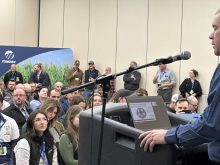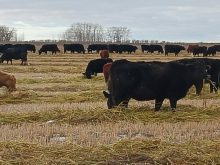Q. Why should I soil test my pastures and hayfields?
A. Soil testing pastures and hayfields should be routine. Often these fields get an initial fertilization and then, after a few years of establishment, growers ask what could be missing to maximize output. Forages are big users of nutrients. In hay crops much of the nutrients taken up are removed from the field when the crop is hauled off.
Best practice is to sample a pasture or hayfield in at least 15 to 20 varying spots across the field in a zero- to six-inch depth. The zero- to six-inch depth is important because most of the nutrients will be concentrated in the top layer of the soil as these fields are not tilled. Nutrient movement will be less than in a tilled soil, so staying at shallower depths will better represent soil nutrient amounts. In addition to testing for soil nutrients, it’s important to analyze soil factors such as pH and soluble salt measurements. These factors can affect success of grass and alfalfa stands — different varieties are better suited to a different range of pH and salinity levels.
Read Also

Claas brings 1000 Series SP forage harvesters to Canada
In mid-August, Claas unveiled its new line of Jaguar forage harvesters at an event in Visalia, California, deep in the heart of that state’s dairy region.
Monitoring nutrients is important for maintaining an adequate supply of nutrients in an established pasture or hayfield. Nutrients can be top dressed throughout the year to feed deficiencies. The main nutrients of interest are the macronutrients nitrogen (N), phosphorus (P), potassium (K) and sulphur (S). Fields that are predominantly alfalfa will fix their own nitrogen. In these cases, P, K and S are the nutrients to closely monitor. Monitoring N levels in pastures or hayfields is important because stands dominated by grass are high users of nitrogen fertilization for yield. Requesting micronutrients on the soil test is also good practice in assessing overall stand health to watch for any other limiting factors.
Brianna Lummerding, B.S.c, PAg, CCA, is a manager of agronomic services for Nutrien Ag Solutions in north-central Saskatchewan.














